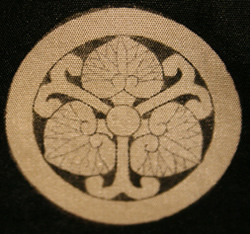 Vocabulary (Annotated):
Korea
Vocabulary (Annotated):
Korea
-
baji (paji): trousers
chima: outer skirt for women. Worn over petticoats (sok-chima aka sokgot) which support the shape and can also influence the color. Chima were originally bifurcated (divided like bloomers and gauchos). Chima are worn high on the body, over the bust, and help to mask the shape of a woman's body. Chima can refer to a skirt that is literally tied on, or what looks like a modern jumper that has narrow shoulderstraps. chobok: Confucian scholar's robecrane: the bird which is an important symbol in Koreadapo: see outer garmentsghat: outdoor hat for men, made of horsehair, bamboo and silk. It has a wide straight brim and a cylindrical crown and is secured on the head with horsehair band around the forehead. - hanbok: traditional dress of Korea
-
jeogori (chogori): jacket for men and women. Male version is longer. Female version has gotten shorter over the centuries. Collar band is dongjeong and ties are goreum.
manggori:
long jacket portion of the hanbok for men, generally worn with trousers or paji.mubok: robe and long vest for a shamano bang jang: coat with stiped sleeves - familial garment to honor parents.
Multicolored stiped sleeves - worn by adult men and one-year children initially. paeja chogori: jacket and vest combination worn by a manouter garments:
dapo: hip length outer garment tied and worn over chogori. It has wide sleeves, narrow cuffs, and flared hem. durumagi: long (mid-calf to ankle length) male outer garment for summer. It is tied at the waist with a long, braided silk cord or sash. They are generally white for general use by scholars, pulic officials, etc. and light blue for special occasions. Generally made from unlined ramie.
sok-chima (sokgot): see chimatangui (tang'ui:): jacket for a woman wonsam: colorful (green yellow, blue, pink, white, red) over-garment for women for ceremonial use, often weddings. Chosum Dynasty.
Last updated: 4/30/2021
 Vocabulary (Annotated):
Korea
Vocabulary (Annotated):
Korea Vocabulary (Annotated):
Korea
Vocabulary (Annotated):
Korea